Place-Based Education: Communities as Learning Environments
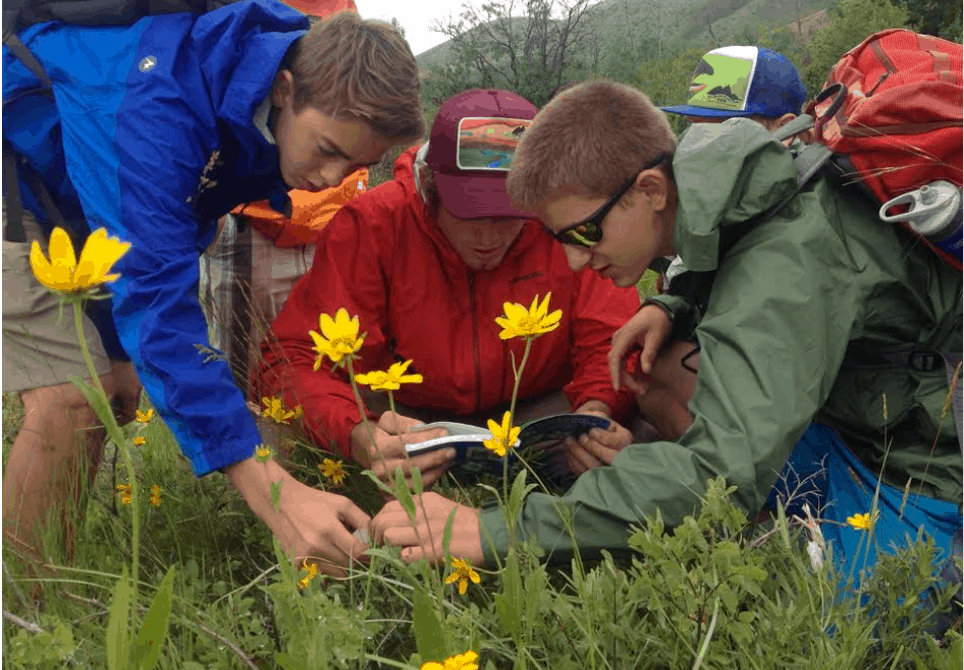
By Nate McClennen
As the emergence of personalized learning, project-based learning and deeper learning approaches, the time is right to connect learning to communities in authentic and meaningful ways. This place-based education approach can serve as a framework to connect learning models, increase the power of our educational system and serve as the foundation for a thriving democracy.
A recent staff symposium at Teton Science Schools, a 50-year old non-profit organization in northwest Wyoming with place-based education as a core mission, exemplifies the depth and breadth of the approach. The symposium was the result of both eager staff and a new innovation fund to bring good ideas outside of current operations to fruition. A variety of presentations supported key components of the PBE approach.
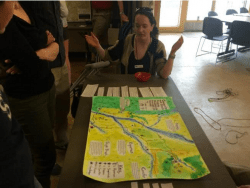 Connection and Relevance: Learning is grounded in local communities. Symposium presentations connected to the fundamental constructs of communities (ecological, political, economic and social lenses). The Journeys School faculty shared a project that connected an elementary school inquiry into food scarcity in social studies and science classes with local research and work with the food bank and homeless shelter to understand the concept locally and globally. Field Education programs shared projects they conduct with visiting schools to connect watershed science, water quality testing and scientific research through actual field research. Both curricula enable personalized, student-centered learning projects around student interests.
Connection and Relevance: Learning is grounded in local communities. Symposium presentations connected to the fundamental constructs of communities (ecological, political, economic and social lenses). The Journeys School faculty shared a project that connected an elementary school inquiry into food scarcity in social studies and science classes with local research and work with the food bank and homeless shelter to understand the concept locally and globally. Field Education programs shared projects they conduct with visiting schools to connect watershed science, water quality testing and scientific research through actual field research. Both curricula enable personalized, student-centered learning projects around student interests.- Partnerships and Permeability: Place-based education relies on the commitment to strong permeability between educational organizations and community partners. Students from the Graduate Program shared outcomes from the course on Social-Ecological System Dynamics where they examined resource management issues such as mountain lion, grizzly bear and sage grouse challenges through the lens of community interviews. Federal and state officials, gas field employees, ranchers and conservationists provided context both in and out of the classroom to help students design their specific solutions to the challenges. Consistent with this theme was a presentation on the pilots for virtual place-based schools that use technology (as a design partner with Motivis Learning) to bring local learning across the world through micro-school models and virtual delivery.
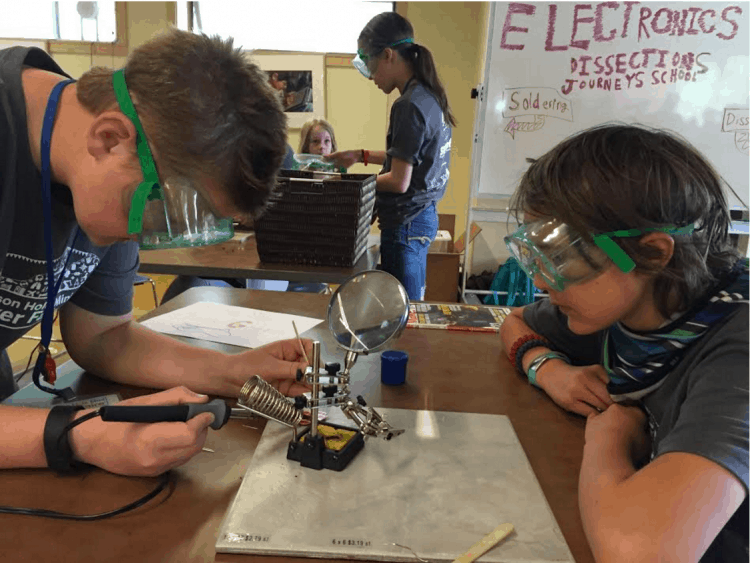 Inquiry and Design: Inquiry and design are core components of Teton Science Schools’ framework for education that encourage staff and students to understand the world through questioning, hypothesis, data collection and solution making via design learning principles. To celebrate creativity and innovation in the northern Rockies, Teton Science Schools hosts the Jackson Hole Mini-Maker Faire. In sharing the project, staff focused on creating a mindshift in PK-12 and adult learning environments to allow each to become a designer and innovator. Partnered with a number of local organizations, including Silicon Couloir, a non-profit promoting the entrepreneurial ecosystem in the region, the maker-faire focuses the region on the need to bring design thinking principles into local learning communities. Many teaching tools and curriculum examples were featured at the event, including novel teaching of the scientific inquiry through card-tricks and investigating space-debris volumes in mathematics.The inquiry and design format supports the development of agency in all learners.
Inquiry and Design: Inquiry and design are core components of Teton Science Schools’ framework for education that encourage staff and students to understand the world through questioning, hypothesis, data collection and solution making via design learning principles. To celebrate creativity and innovation in the northern Rockies, Teton Science Schools hosts the Jackson Hole Mini-Maker Faire. In sharing the project, staff focused on creating a mindshift in PK-12 and adult learning environments to allow each to become a designer and innovator. Partnered with a number of local organizations, including Silicon Couloir, a non-profit promoting the entrepreneurial ecosystem in the region, the maker-faire focuses the region on the need to bring design thinking principles into local learning communities. Many teaching tools and curriculum examples were featured at the event, including novel teaching of the scientific inquiry through card-tricks and investigating space-debris volumes in mathematics.The inquiry and design format supports the development of agency in all learners.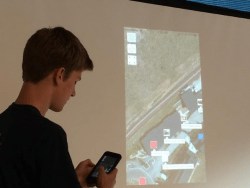 Student-Centered: The most favorable outcomes in terms of both learning and engagement emerge through student-centered and personalized learning pathways. Providing opportunities in this area are critical in the success of a place-based education approach. A Journeys School student presented his final 10th grade project where he designed a digital tour of the school campus using the open-source ArisGames platform while a field education faculty shared experiences with implementing student-centered learning through a combination of the BEETLES curriculum, NGSS standards and local place-based curriculum.
Student-Centered: The most favorable outcomes in terms of both learning and engagement emerge through student-centered and personalized learning pathways. Providing opportunities in this area are critical in the success of a place-based education approach. A Journeys School student presented his final 10th grade project where he designed a digital tour of the school campus using the open-source ArisGames platform while a field education faculty shared experiences with implementing student-centered learning through a combination of the BEETLES curriculum, NGSS standards and local place-based curriculum.- Interdisciplinary: Place-based education creates interdisciplinary learning experiences to increase authenticity. Journeys School high school faculty shared a project called “Taming the Beast” which examined historical context of wildland and human interfaces, scientific ecological inquiry and the reading of Beowolf and Grendel all within the International Baccalaureate framework. Interdisciplinary, interactive presentations on using animal movement to write poetry, and ecological concepts to predict locations of indigenous people in the area, stimulated creative conversation around possibilities to break down the artificial barriers between traditional areas of study.
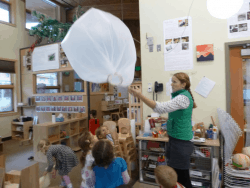 A presentation about a Reggio-Emilia/Outdoor Pre-Kindergarten student investigation of wind started with students attempting to capture pictures of wind to a full fledged design, creation, and testing of a miniature hot air balloon.
A presentation about a Reggio-Emilia/Outdoor Pre-Kindergarten student investigation of wind started with students attempting to capture pictures of wind to a full fledged design, creation, and testing of a miniature hot air balloon.
The five components presented here describe an approach to place-based education that moves beyond the traditional definition connected to environmental education and directly into a future vision for a rich and engaging curriculum in all schools.
Instead of asking students to wait for 20 years to really understand the “why” behind school, students should spend twenty years as integral and participatory members of learning communities. Imagine a world with place-based education for every child–connecting learning locally, regionally, and ultimately, globally. With multiple opportunities to interact with professionals, design solutions to real challenges, and skills to understand the world through multiple lens’, these students are the citizens the world needs for tomorrow.
This blog is part of our “Place-Based Education” blog series. To learn more and contribute a guest post for the series, check out the PBE campaign page. Join in the conversation on social media using #PlaceBasedEd.
For more on Place-Based Education, see:
Nate McClennen is the Vice President for Education and Innovation at Teton Science Schools. Follow him on Twitter: @tetonscience.
Stay in-the-know with all things EdTech and innovations in learning by signing up to receive the weekly Smart Update.




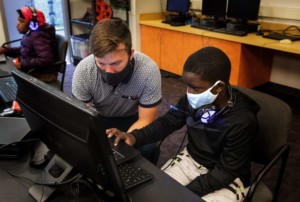

0 Comments
Leave a Comment
Your email address will not be published. All fields are required.